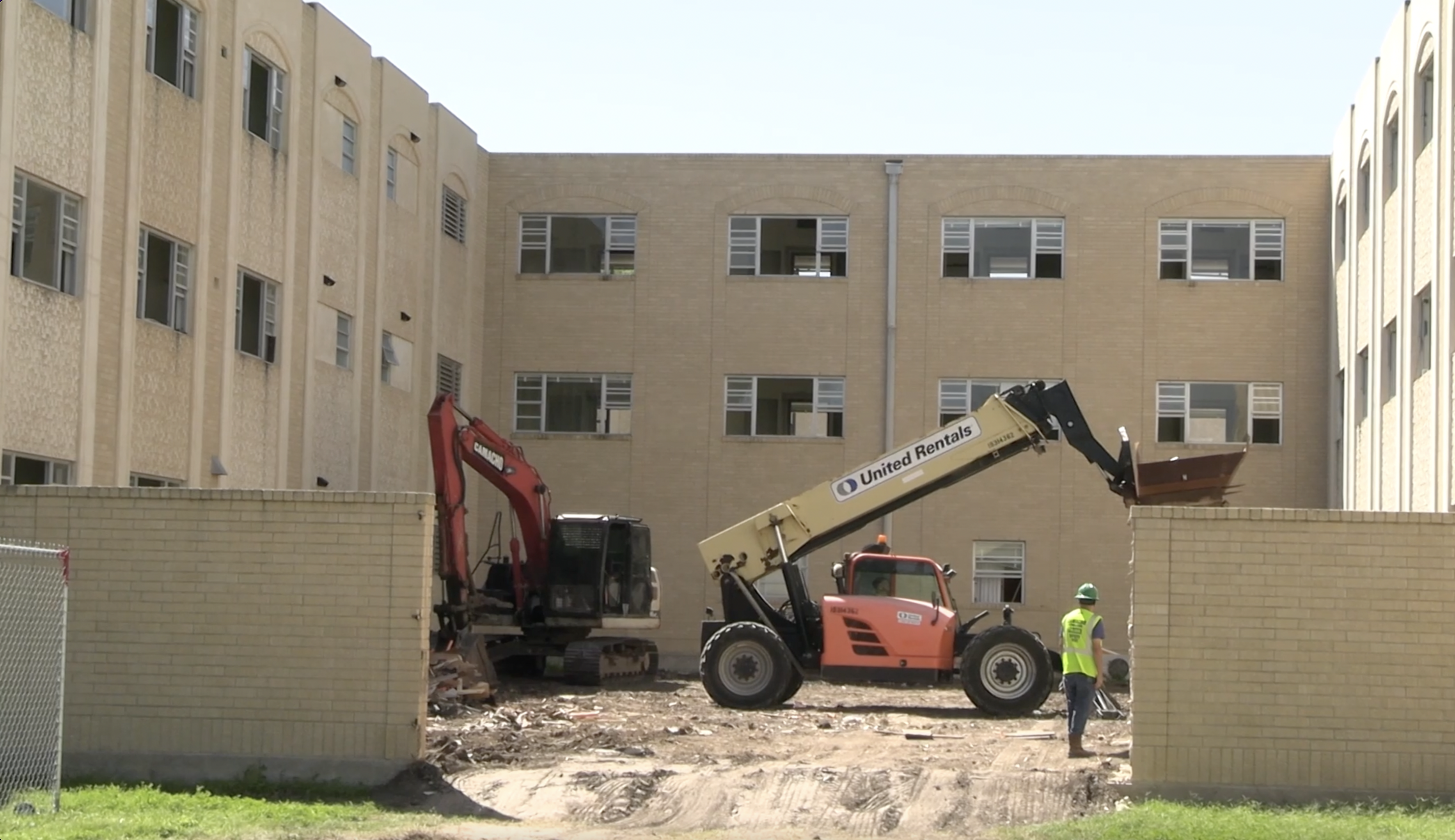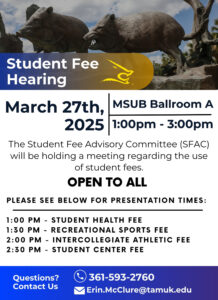Demolition process currently underway
From sliding down the stairs on a mattress to meeting lifelong friends, Turner-Bishop Hall has earned a special place in the hearts of many Javelinas.
On March 6, hundreds of Facebook users quickly reposted the last glimpse of Turner-Bishop Hall, a dormitory, followed by their favorite memories of the building which dated back to 1972.
Turner-Bishop Hall was known as a pivotal point in people’s lives, as it was their first introduction to independence as a college student. The building’s last hoorah was during the pandemic as it was used to quarantine students positive with COVID-19.
“My favorite memory was of all the basketball games we would play outside of Turner-Bishop. It was cool just to meet people outside of my major, some of those people turned out to be some of my good friends that I still keep in touch with… That dorm is sentimental to me since it was my first place that I ever stayed at that wasn’t my home/hometown with people from all over Texas,” alumnus Arnoldo Ornelas Jr. said.
The grounds on which the dormitory once stood will still help students make memories.
“We want to turn that space into what I call a pocket park. We would place down sod grass and beautify that area for student use. We are working to build a health hub…but that’s down the road. We could have another academic building. We don’t know what we would like to do quite yet. We have to be strategic about where the needs of these types of buildings are and whether
or not we have the infrastructure in place to carry it out,” President Dr. Roberto Vela Jr. said.
The demolition project of Turner-Bishop Hall is expected to be completed by December given a few weather delays according to the timeline provided by Chris Vera, associate vice president for campus operations.
The project team consists of TAMUK Facilities Planning and Construction Office, AGCM Inc., Camacho Demolition, Halff Associates, Rock Engineering and All Points Environmental.
“As you can see the site has been turned over to the contractor to maintain a secured perimeter. During the project, the construction perimeter will shift as we execute the phased demolition. We want to be able to provide safe space for our students, staff, faculty, and community neighbors, as well as provide space for the contractors to operate safely within the confined area,” Vera said.
“At construction meetings, the project team is not only involved in future progress, but also in how that future progress may affect the surrounding community. We will discuss, adapt and execute safety plans as necessary throughout the entirety of the project.”
The main things Vera stressed was ensuring the safety of the community and planning ahead in this project.
“We spent a lot of time during the design phase to try and plan for the types of challenges normally associated with a project of this scale. Site logistics is challenging during the spring and fall semesters, since it involves street closures, partial lot closures and possible periodic impacts on pedestrian walking paths,” Vera said.
President Vela mentioned his request for a safe removal of the rare lava rocks located on the southside of the building to place around campus for others to enjoy, and for the team to do their best to preserve the trees within that area.
During President Vela’s time as a student and Upward Bound Coordinator he spent six weeks living in Turner-Bishop and recalled the memories of building young minds and cultivating them to believe they could attend and graduate from TAMUK.
Student Crystal Ortiz shared her memories of staying at Turner-Bishop during TAMUK summer band camps during high school, and how it influenced her decision to pursue a degree at the university.
The South Texan posted a link to a Google Form questionnaire that allowed for alumni to reflect on their favorite memories of living at Turner-Bishop Hall.

